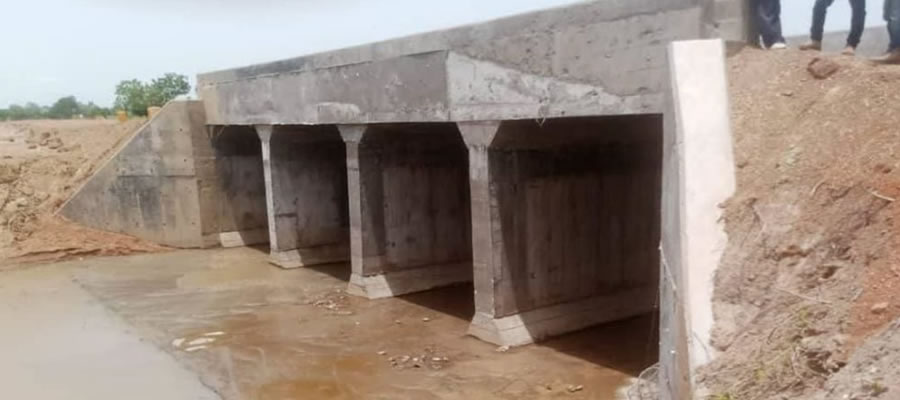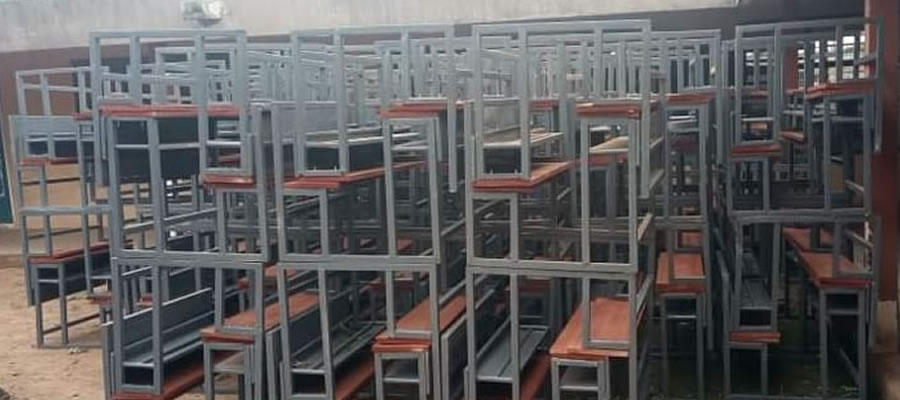

- Completion of a 12-classroom block at a cost of ¢540,690,456.10
- Construction of a district library at a cost of ¢94,121,446.00
- Rehabilitation of GES block at a cost of ¢36,33 8,396.00
- Construction of GES office Annex at a cost of ¢84,054,422.00
- District Assembly’s support for school-for-life projects completed at a cost of ¢12,904,020.00
- Rehabilitation of District Director of Education’s quarters (on-going) at a cost of ¢46,316,5O8.OO
- Rehabilitation of classroom block at a cost of ¢25,077,000,00
Educational Needs
The important role that education plays in the social, cultural and economic development of a district or a nation cannot be over-emphasised. The major objective of the country’s educational policy is to expand and consolidate facilities for education, so as to ensure increase in the in-take of children in the school going-age in order to improve the school participatory rate in the country.
Thus in developing a rural district like Saboba District, manpower constitutes a key resource that needs to be harnessed fully in order to ensure its fullest and most productive utilisation. It is the realisation of this vital role that the district’s future educational facilities and teacher requirements are estimated to see what sorts of interventions are needed. The projections are made on the basis of the following assumptions:
With Government’s intention to provide free and compulsory basic education in the country by the year 2009, it is envisaged that the school participatory rate of 28% in 2006 will increase to about 33% in 2007, 38% by the year 2008 and about 48% by the year 2009.
It is envisaged that the 2006 school participatory rate of 3% for
SSS/Technical/Vocational Schools which is far below the national rate of 10% will increase to about 4% in 2007, 6% in 2008,11% in 2009, hoping that the development injections in the district economy will improve the people’s income levels and, hence, induce the people to send their children to school.
It is expected that in 2006 some basic infrastructure such as electricity and good roads would be provided to attract personnel including trained teachers into the district.
Population for Basic and SSS/Technical/Vocational education that is 6 to14 years and 15 to 17 years respectively, the expected school population was estimated for the period 2006-2009. The information is provided in Table 3.7.
It is observed, for instance, that by the year 2005, out of a total district population of 107,934, about 26,935 and 6,743 would be available for Basic Education and SSS/Technical/Vocational Education respectively. However, it is not every potential candidate who would enroll for school, hence, the need to estimate the School Participatory Rate (SPR) and the total enrolment for each level.
The SPR is given by total enrolment in a particular level for the specific year divided by the total population aged 15-17 years in that year. For Basic Education, the SPR for 2006 was estimated at 0.27. By definition, the estimated enrolment is the product of the population of the school-going age and SPR. Thus on the basis of assumptions of SPR for the two levels of education for the various years in the plan periods, the estimated enrolments were obtained as depicted in Table 3.8.
Demand for Schools
By the national standard of 2000 population threshold of an area for a primary school or JSS, the existing number of 97 primary schools in the district cannot adequately support the total estimated enrolment in primary schools over the plan period. What is therefore needed is that apart from maintenance of the buildings and adequate provision of school equipment and logistics, there is the need to provide additional 17 primary school blocks. However, with the existing number of 20 JSS in the whole district, the total estimated population of 29,963 in the year 2009 will need additional eight (8) JSS to support the population.
However, there will be no need for any Technical/Vocational School by the end of plan period. This information is shown in Table 3.9. The estimated backlog in educational need is presented in Table 3.10. Thus, for instance, there is a backlog of seventeen (17) primary schools and eight (8) basic schools by the year 2009.
Demand for Teachers
The National standards for teacher-pupil ratio of 1:32.6 (1:40) and teacher-student ratio of 1:35 were used to estimate the member of teachers needed in the basic and SSS/Technical/Vocational schools respectively. The anticipated number of teachers for the estimated enrolments was calculated for a particular year by the national standard ratio. Table 3.11 depicts the information on the demand for teachers in the district for the period, 2006 - 2009
Housing Need
Given a household size of 7.9 persons, which is above the national average of 5.0, and room occupancy of 1.5 persons, which is well below the national form of 2.5 persons. The housing problem in the district is qualitative rather than quantitative.
Against the background of poor physical structures expressed in cracked and dilapidated walls, leaking roofs, exposed foundations, and poor environment depicted by poor drainage and unkempt surroundings, about 80 per cent of the existing housing stock needs to be rehabilitated. This is necessary to increase the lifespan of the buildings, which is a practical and assured way of increasing the quantity of housing in the district. In addition to this, efforts must be made to provide about 20 per cent new housing by the year 2009 to cater for the growing population.
Date Created : 11/18/2017 7:52:20 AM












 facebook
facebook
 twitter
twitter
 Youtube
Youtube
 +233 593 831 280
+233 593 831 280 0800 430 430
0800 430 430 GPS: GE-231-4383
GPS: GE-231-4383 info@ghanadistricts.com
info@ghanadistricts.com Box GP1044, Accra, Ghana
Box GP1044, Accra, Ghana